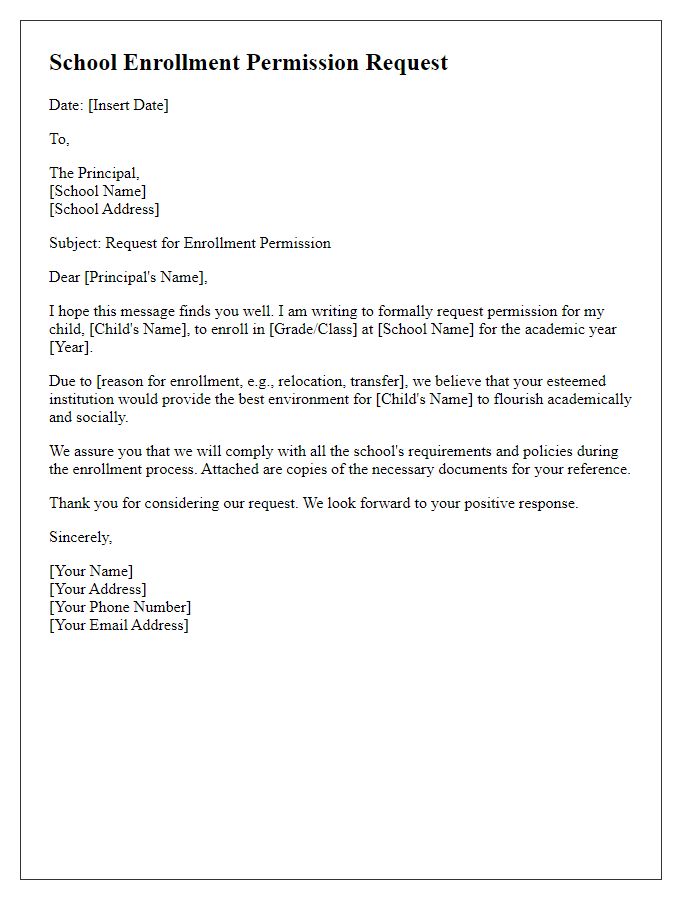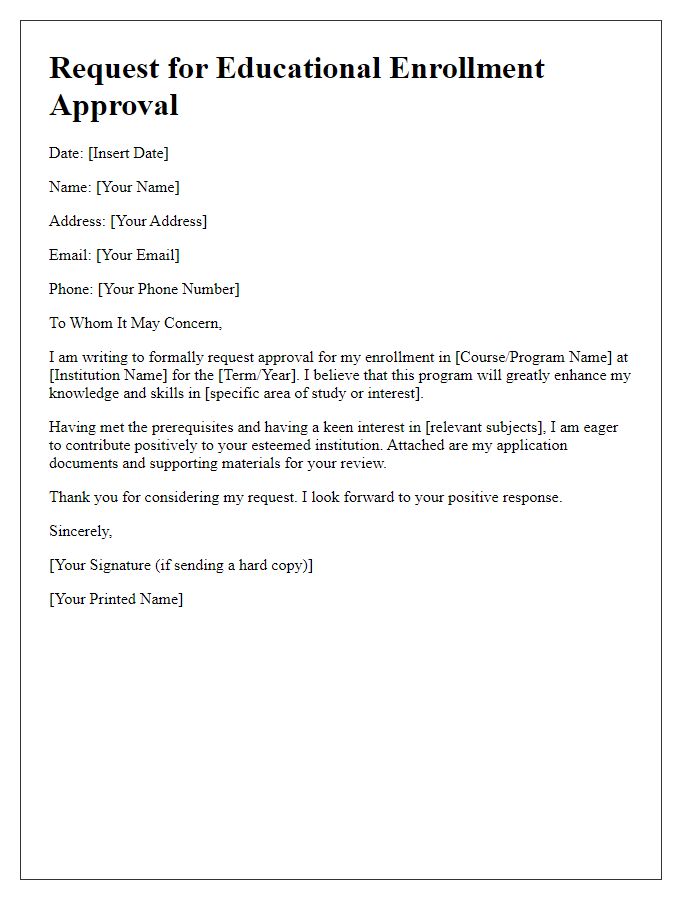Are you looking to navigate the enrollment process for your child's school smoothly? Signing the enrollment authorization letter is a crucial step in securing your child's spot and ensuring they have a great start to their education. It's important to provide the right details to avoid delays and make the experience hassle-free. Curious about how to draft the perfect enrollment authorization letter? Let's dive in!

Recipient's Information
In the process of school enrollment authorization, it is essential to include recipient information that details the specific individuals or entities involved in the enrollment procedure. This typically consists of names, addresses, and contact numbers of the recipient, such as the school administration office, enrollment coordinator, or specific designated officials. For example, the recipient address may indicate an institution like Springfield Elementary School, located at 123 Main Street, Springfield, IL 62701, USA. It is crucial to provide accurate and complete details to ensure smooth communication and processing of enrollment requests. Having the correct email addresses and phone numbers (e.g., (217) 555-1234) allows for quick follow-ups and clarifications. Properly formatted recipient information enhances the professionalism and effectiveness of the authorization process.
Student's Details
Enrollment authorization for students requires detailed information regarding personal data and academic history. The student's full name (first, middle, last) should be documented for identification purposes. Date of birth (month, day, year) represents the student's age and ensures accurate grade placement. The student's address (including city, state, ZIP code) is essential for school district assignments. Additionally, parent or guardian names must be included for emergency contact and enrollment verification. Previous school attended (name of institution, city, state) and the last grade completed offer insight into the student's educational background. Relevant health information, including allergies or medical conditions, is crucial for ensuring safe school environment. Finally, any special education needs or language requirements should also be noted to facilitate appropriate resources.
Authorization Statement
School enrollment authorization involves granting permission for a student to enroll in a specific educational institution, which may include primary, secondary, or higher education settings. An authorization statement typically outlines the necessary permissions from guardians or parents, affirming agreement to the enrollment process. This statement may require inclusion of the student's full name, date of birth, and specific school details, such as the school district, school name, and start date. Additionally, it may outline the guardian's or parent's relationship to the student, contact information, and signature, verifying the authenticity of the authorization. In many cases, supporting documents such as proof of residency or identification may also be necessary to complete the enrollment process.
Parent/Guardian Signature
A school enrollment authorization document requires a parent or guardian's signature to officially confirm their consent for a student to enroll in a specific educational institution. This document typically includes essential details such as the student's full name, date of birth, and grade level, as well as the name of the school (e.g., Lincoln High School) and the academic year (e.g., 2023-2024). Including the parent's or guardian's name, relationship to the student, and contact information provides clarity and transparency. Furthermore, a date line for the signature reinforces the authenticity of the document, ensuring that the authorization is current and valid at the time of enrollment.
Contact Information
School enrollment requires accurate contact information for effective communication. Parents or guardians must provide details such as primary telephone numbers (including area codes), email addresses, and home addresses for official correspondence. Schools often request additional backup contacts, ensuring reachability in emergencies. Accurate data enables timely updates regarding school events, attendance issues, or health alerts. Maintaining current contact information is crucial for smooth enrollment processes and fosters a supportive educational environment for students.













Comments